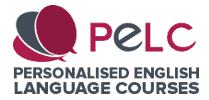Which areas of English must you focus on to speak fluently?
When it comes to speaking English well, there exist thousands of grammar and vocabulary books, more coursebooks for classroom use than you can shake a stick at and millions of online resources. Speaking English freely does not result from turning pages in books and studying every aspect of the English language under the sun. It’s about prioritising. Hence, the burning question I wish to answer in the post is - Which areas of English must you focus on to speak fluently?
Less motivational tips - more ideas about what to study
There are so many articles on the Internet with tips for “learning English quickly and easily”. In truth, it’s become a numbers game: Who can come up with the most number of tips?
The author of this article, Mr Ryan Sitzman, is actually a specialist in the German language. So, of course, that qualifies him to come up with a bunch of random tips to learn English quickly and easily, doesn’t it?
Tips like “you need to practise” and “make learning fun” smack of stating the obvious. OK. You need to practise. But what, exactly, do you need to practise? Which areas of English must you focus on to speak fluently?
Let’s dive in:
1. Not as many tenses and aspects as you think
Most of the English tenses and aspects you learned about at school are actually not used all that often in spoken English. I believe you can effectively throw away all your old notebooks and grammar books with detailed information on all those tenses and aspects which you’re never likely to use in everyday conversation. These tenses include the future perfect continuous, future perfect and past perfect continuous. Moreover, when it comes to attaining fluent speech, learning about the passive voice is a huge waste of time. Indeed, the passive voice is used more in formal, written English, such as essays and theses.
The tense aspects which tend to appear in conversation are:
- present simple
- past simple
- present perfect continuous
- present perfect
What should you do with these four tenses?
I believe you should create as many personalised sentences as you can with them. By personalised I mean true sentences about your life experiences, current primary concerns and hobbies. After that, get your sentences checked and voice recorded by a native speaker and read through them every day.
What else? Stories, stories, stories. Life stories.
I've recently been trying to encourage one of my elementary level students to summarise some of the main events in her life using the four tenses. Naturally, I have to give her prompts to help her stay on track, but she's getting there:
"I was born in ______. I lived there for the first fifteen years of my life, and then I moved to _______. Three years later, I moved to _____ to study journalism at The University of _____ . I now live in ______. I've been living here for ten years. I've never lived in a flat but I'd like to one day."
2. Selective vocabulary and collocation learning
It should be clear to you from the previous point about mastering tense aspects that I heavily favour a selective approach to language learning.
This selective approach is no different when it concerns the learning of vocabulary and collocations.
My self-written texts usually contain plenty of common words and phrases that native speakers of English use in everyday conversation. However, it’s important not to get excited and stressed in the face of so much new and interesting lexis.
If a text contains twenty unfamiliar vocabulary items, it would be impractical to focus on all of them. Therefore, choices have to be made. Concentrating on, and creating personalised sentences with, six to eight words and phrases is more manageable than trying to memorise all twenty vocabulary items.
My motto is: “Deep learning of a few is better than shallow learning of a lot”.
3. Personalise collocations
It’s no secret that I’m crazy about collocations. I’m absolutely convinced about the value of learning them when it comes to developing fluency and avoiding monotonous speech using the same old words and phrases.
You need to create personalised sentences which contain a target collocation. If you create sentences about situations which are familiar to you, then you automatically create a deeper mental bond with each target collocation. Therefore, there’s a better chance of successfully recalling both the target collocation and entire personalised sentences in future conversations.
For example, let’s say you’ve just come across the collocation make a complaint.
You should come up with true and meaningful sentences which contain this collocation. Writing “I never make complaints” is too obvious. If you don’t like making complaints, go a bit deeper: “I don’t like making complaints because I’m quite a timid person who tends to avoid trouble”.
By creating personalised sentences, you’re essentially preparing yourself for future conversations because regular revision of the sentences ensures that they’re “swimming in the brain” during conversation. Ideally, you should keep a record of your sentences on flashcards or in a Word-Phrase Table. The icing on the cake would be to find a native speaker to voice record your personalised sentences.
Do read about my beliefs regarding the effective memorisation of vocabulary and collocations.
4. The gerund after an adjective, verb or noun + preposition
During online classes with students, I always note down some of the mistakes they make when speaking.
I’ve noticed that a great majority of my students have issues with consistently applying the gerund after prepositions.
Some types of mistakes in spoken English are quite forgivable. Unfortunately, using the infinitive instead of the gerund after prepositions can sound quite amateurish.
Let’s have a look at some examples:
1. The verb prevent is never followed by an infinitive. Use the pattern: prevent someone/something FROM DOING something:
✗ They tried to prevent me to leave
✓ They tried to prevent me from leaving
2. The phrasal verb look forward to is never followed by an infinitive. We need to apply the pattern: look forward TO DOING something:
✗ I’m really looking forward to go to Warsaw next week
✓ I’m really looking forward to going to Warsaw next week
There are so many cases whereby the gerund appears after verbs, nouns and adjectives + preposition. Check out this page as a starting point.
As ever, you need to put in many hours of study to reap the benefits. Ideally, you should create as many personalised sentences as you can containing this preposition + gerund structure.
5. Deep listening to recognise connected speech patterns and schwa
When you listen to a TED talk, for example, it’s no good just listening to it from start to finish and then moving on to another task.
“Deep listening” involves stopping and starting a transcript and analysing the way native speakers link words using connected speech. Moreover, you may analyse how these speakers use schwa as a method to reduce the emphasis placed upon function words, such as prepositions.
You can also check out my videos about schwa on Youtube:
Types of connected speech:
There are many different kinds of connected speech. The main examples include:
1. CATENATION - Catenation is when the end of one word blends smoothly into another. This is the case when the a word ends in a consonant and the first sound of the preceding word is a vowel. There is no noticeable pause between the two words.
For example:
This evening = thisevening
I want that orange = thadorange
2. INTRUSION - Intrusion refers to how an additional sound appears between two other sounds. It is often a /y/ or /w/ sound between two vowel sounds.
For example:
He asked = heyasked
Do it = dowit
Go out = gowout
be able = beyable
If you’ve mastered the basics of English pronunciation, I believe that the next step is to learn how to connect words and use schwa to become a more fluid English speaker.
TED talks, due to the accompanying transcripts, are perfect for acquainting yourself with the ins and outs of connected speech and schwa.
6. Use contractions when speaking
The last area which educators and students overlook when it comes to fluent speech is the use of contractions.
In theory, I’m sure that many of you know how to contract pairs of words. Unfortunately, you are the victims of a school system and curricula which placed heavy emphasis on unnaturally formal and “correct” speech.
In essence:
1. Don’t say “I have” - say “I’ve”
2. Don’t say “I would not” - say “I wouldn’t”
3. Don’t say “I should not - say “I shouldn’t”
4. Don’t say “I am” - say “I’m”
I respect that it’s not easy to change ingrained habits. A good start would be to record some true stories about yourself, your hobbies and your work. Simple topics. Of course, make sure you’re 100% focused on using contractions. Even write CONTRACTIONS on a sticky note and put it up on the wall in front of you while you’re recording if you have to.
Which areas of English must you focus on to speak fluently?
Based on my experience and common sense, I thoroughly believe that focusing on the six tips in this post will improve your spoken English by 20% within a matter of months.
It takes time to create personalised sentences, not to mention write and record true stories about yourself using contractions and verbs with prepositions followed by a gerund. Certainly, it requires a great deal of effort to analyse TED talk transcripts.
However, you have to work hard to do yourself proud and stand out from the crowd.
You should now have an appreciation of how to go about tackling the question ‘Which areas of English must I focus on to speak fluently?'
To quote myself again: “Do yourself proud and stand out from the crowd”.



